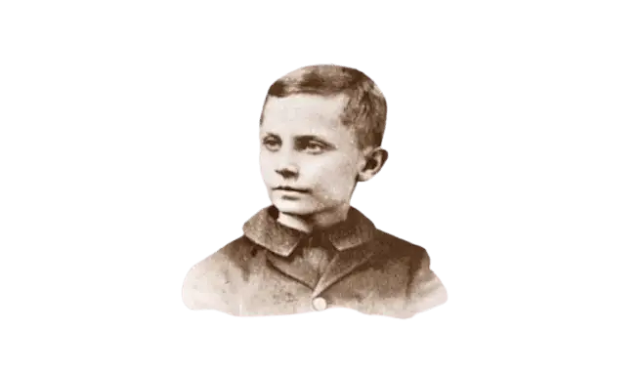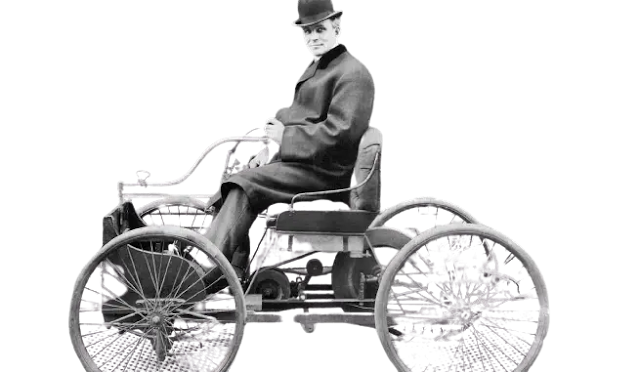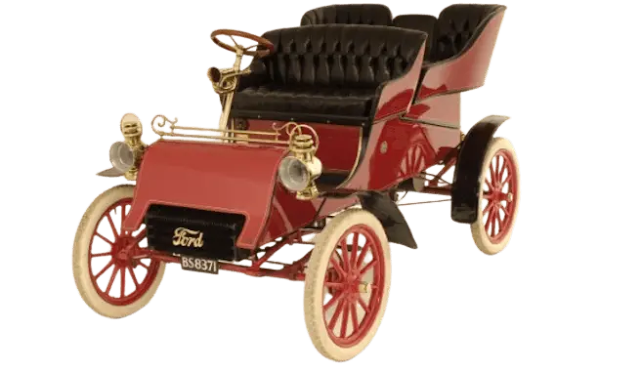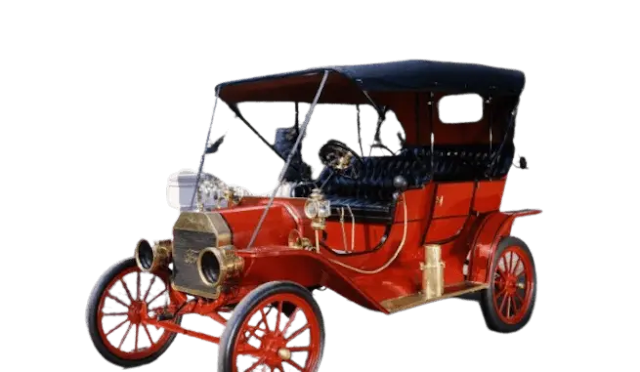Learn more on Henry Ford Biography, The Farmer Boy Who Invented Ford, Henry Ford Early Life, and Henry Ford first Car
Henry Ford Biography
When trains and horse-drawn carriages were the only modes of transportation and the first automobiles were primarily seen as racing machines for the wealthy, a 16-year-old boy named Henry Ford set out for Detroit in the direction of Detroit in 1879. Thirty-five years after his arrival in Detroit, half of all the cars on the planet bore his name, and he would go on to become one of the most influential people in the history of the automobile.
 |
| Henry-Ford |
Henry Ford Childhood
On July 30, 1863, on the farm that is now Dearborn, Michigan, Henry Ford was born. Henry Ford, the eldest of the family's six children, was anticipated to inherit his father William Ford's farm, where everyone in the family resided and worked.
He was never interested in his father's business, though, and at the period when farming was labor-intensive, slow, and demanding, he was nothing like his father. Henry Ford once said, "I never had any particular affection for the farm; it was the mother on the farm I loved," even though he tried his best to help out.
Henry, like the majority of youngsters his age, disliked going to school and never completed eighth grade. He preferred to learn on his own schedule, and he developed a strong interest in mechanics at a young age. He studied every piece of machinery he came across because of his fascination with machines.
His father gave him a pocket watch when he was 12 years old, and after experimenting with its mechanisms, he quickly learned how to disassemble it and reassemble it, as well as the watches of his friends and family.
He then developed a reputation as a watch repairman and started repairing watches for locals. Henry first encountered a steam engine when he was 13 years old when on a field trip with his class to one of Detroit's businesses. From that point on, his love of mechanics developed into an obsession, and for the following few years, it became his new interest. By the time he was 15 years old, he had built his first steam engine, but things changed when Henry Ford's mother Mary passed away suddenly from an illness.
Henry was the only person on the farm who was close to his mother, with whom he had a tight relationship. Henry's hatred for the farm grew as a result of her devastating loss.
The farm carried too many memories of his cherished mother, so he started seeking for a way out of his predicament. Henry left the hamlet in quest of a fresh course in life after turning 16 and against the desires of his father.
Detroit at the time was rapidly developing as an industrial center as a result of the steam engine, and the city was bursting with young engineers looking for work.
Henry Ford Early Life
Henry obtained a position at Michigan Car Company Works, a street vehicle manufacturing company, and began his journey to remaking himself by learning everything there was to know about machines. It was in Detroit that Henry Ford would do this.
Henry Ford, who had been jobless for some time, eventually found employment as an apprentice at the James Flower and Brothers Machine Company, where he made $2.60 per week, but not enough to pay his rent. However, he was dismissed only six days later.
Henry used his boyhood fascination to his advantage and took a job cleaning and repairing watches six days a week for three dollars. Although working many jobs to support himself, Henry continued to research and experiment with machines whenever he had free time.
Henry Ford decided to move back to Michigan when he was 19 in 1882. However, he did very little work there and spent most of his time tinkering and playing with the tools he discovered on the farm because he still detested farming.
The portable steam engine his father had bought, which had swiftly become standard among farmers, was a fortunate purchase on his part.
A neighbor at his father's farm hired Henry to run his steam engine for three dollars because he spent most of his time there and become so proficient at it. From that point on, Henry Ford's skill and aptitude for machinery spread throughout Michigan. Henry's talent was discovered by the Westinghouse Engine Company's Schenectady area agent, who then employed him.
It was Henry's responsibility to install and maintain Westinghouse Steam Tractor Engines while traveling throughout Southern Michigan.
Henry Ford Wife
Henry got engaged to Clara Jane Bryant in 1885 after they had met at a New Year's Eve celebration. Henry's father gave him 40 acres of property the following year as a wedding present, but Henry had other plans for the land than to use it as a farm.
Around the time Henry and Clara moved into their modest Detroit apartment in 1891, Henry discovered a British magazine and learnt about the gas engine.
In comparison to steam engines, this gas engine was particularly unique and was being developed in tiny quantities by a German engineer named Nicholas Auto. For starters, they didn't require 30 minutes to start up because the engine completed all necessary combustion.
Although few Americans had heard of this new engine, it was quickly gaining a lot of popularity in Europe. Fortunately for him, he discovered someone who possessed one in the city.
Henry Ford fell in love with the gas engine right away, but he was unable to comprehend how it operated. Knowing that the gas engine was ignited by an electric spark only made matters worse, and he was forced to learn more about this.
Henry submitted an application to work as a night engineer with the Edison Lighting Company, paying $40 per month. At the time, the business served 1,000 residences in the city using a steam engine, making it the largest electric enterprise in Detroit.
Henry was therefore more than qualified to work there. His primary responsibility was to repair the engine whenever it broke or developed a fault, but since he didn't have much else to do when it was running smoothly, he had more than enough free time to fully devote himself to learning about electricity and how it functions.
Henry and Clara Ford received their one and only child, Edsel Bryant Ford, in 1893. Three months later, Henry was promoted to Chief Engineer, earning a salary of $100 per week.
How Did Henry Ford Start His Business
Henry's aim of building a horseless carriage was realized when he succeeded in building his first functional gas engine the same year.
 |
| Henry-Ford |
Henry Ford First Car
He didn't complete his experimental gas-powered car until precisely 1:30 am on June 4th, 1896. He referred to it as the Quadricycle. The Quadricycle was essentially an ungainly device that was made of two bicycles stacked one on top of the other and propelled by a gasoline engine.
Even though the experiment was a success, it had a few drawbacks of its own. For example, the experimental car only had two gears, neither of which could be used to move forward or backward, but the biggest issue was that it lacked a cooling system, making it susceptible to overheating after a while.
The addition of a cooling system was Henry's most significant modification to the car among his many others. With the assistance of the mayor of Detroit, he later sold the car for $200 and utilized the proceeds to fund another significant endeavor.
 |
| Henry Ford’s First Car-The Henry Ford |
By July 1899, Henry had finished building his second experimental automobile. The new vehicle was bigger, stronger, and heavier than the old one.
Henry once took William Murphy, a wealthy lumber merchant, on a test drive in his brand-new car. During the test drive, William realized he wanted to join Henry's business enterprise. They quickly shook hands, and on August 5th, 1899, the Detroit Car Corporation was established.
Regrettably, the business failed a year later for a number of reasons. The stakeholders who were pressuring Henry to produce passenger automobiles did not share Henry's views on how to improve the car he was working on. The fact that many of the components needed to manufacture his automobiles were made by separate businesses was another obstacle. As a result, anytime a delivery was delayed, the entire factory had to wait. Production was significantly delayed as a result of this.
Henry was sacked from his post as a result of the failure of his first company, but he maintained his optimism despite the fact that his first car, which he called The Delivery Wagon, took six months to manufacture and only 20 of them were produced during the company's first two years of operation.
Failure is only a chance to try again, this time with greater knowledge.
When he was fired, Henry was genuinely relieved since the pressure was off and he could now concentrate on other things. Henry made the simple decision to focus on racing automobiles.
Henry wanted a platform to showcase his cars and their quality because racing had become a very popular sport in the United States. In addition, despite knowing many well-known individuals in the city, not many of them would be willing to invest in his ideas following what happened to the Detroit Automobile Company.
A year later, Alexander Winton's car from Cleveland and the top National Racing Driver gross point in the country were defeated by Ford's newly developed racing car.
Racing had become a very popular sport in the United States, therefore Henry needed a platform to display his cars and their quality. Furthermore, despite knowing many prominent people in the city, few of them would be ready to finance his ideas in light of what transpired with the Detroit Car Company.
A year later, Ford's freshly created racing vehicle defeated Alexander Winton's Cleveland-based vehicle and the top National Racing Driver gross point in the nation.
Henry Leland, on the other hand, followed the wishes of his investors and went on to create what is now known as the Cadillac. With Henry Ford gone, the name of the company was changed from Ford Motor Company to the Cadillac Motor Company. Ford left the company because he was upset that they had hired someone else to take over his position. Henry is quoted in his autobiography as saying, "I resigned determined never again to put myself under orders."
The construction of racing automobiles was continued by Henry Ford and Tom Cooper, a former cyclist in competition. Barney Oldfield, a former bicycle racer who had never driven an automobile before, outperformed Winton's car in 1902 when they built the Ford 999, an 80 horsepower vehicle.
By 1904, Henry's new automobile had broken all national records, reaching a high speed of 91.4 mph. Henry had proven himself to be the best American racing car designer with these accomplishments.
As he was ready to launch his third company, he knew he would have investors' support once more thanks to his stellar reputation. 11 investors, including coal dealer Alexander Young Malcomson from Detroit, provided assistance and funding.
The Ford Motor Company, originally known as Ford and Malcomson Limited, was founded as Henry's third business venture. After failing in his first two tries, in 1902, he was determined to succeed this time.
Ford focused on building a car that the average person could buy because, at the time, owning a car was a luxury that only the wealthy could afford. One reason is that the vast majority of the automobiles produced were made exclusively for racing, and these vehicles were made by exceptionally talented engineers.
Henry addressed his partners and investors at the launch of his new company in a statement.
"I will design a motor vehicle for the great majority that is made from the best materials by the greatest workers and is priced so reasonably that no guy earning a good income would be unable to afford a Ford." With a talent for spotting and luring the industry's top talent, he employed a number of brilliant young men who shared and supported his vision.
In terms of the car's design, Henry tried around 20 different ideas before coming up with the one that actually worked. He named it The Model. Henry continued to enhance The Model A over the following five years, after which the Model N was released. Nevertheless, during those five years, manufacturing techniques changed more than Henry's designs did.
Henry formed A Machine Shop in Detroit to achieve just that after learning from his failed businesses how important it was to have one manufacturer supply the majority of the parts he required to produce his automobiles.
.webp) |
| Henry-Ford |
Henry had a brilliant idea after seeing the assembly line concept at a slaughterhouse one day while visiting Chicago. You see, back then, he could create more automobiles in a day if he could apply the same concept to his car-building. Ford and many other automakers assembled one vehicle at a time, which slowed down manufacturing.
Henry thus raised further funds in 1904, established his own factory, hired around 300 workers, and started experimenting with the assembly line inside his new facility. The assembly line wasn't fully used for the first time until the Model N was produced in 1906, but even then it was still a work in progress.
Yet, it did five times the level of manufacturing, making Henry's new model the best-selling automobile in the States, but Henry had bigger goals in mind. In 1905, Henry established his own manufacturing business to begin producing his own automobiles' engines, transmissions, and other components.
Around this time, Henry also made the discovery of vanadium steel, which was largely responsible for the automobile industry entering a new era. Three times as strong and a lot lighter as the preceding steel was vanadium steel.
Henry used this new steel for his new design, the Model T, which would go on to become one of the most popular automobiles in history.
A company that is entirely focused on customer service will only be concerned about making profits that are uncomfortably high.
 |
| Ford Model T |
The Model T was Henry Ford's solution to his aim of producing cars for the average person for everyday use.
Henry's Model T was one of his most expensive vehicles when it was originally produced. The Model T was priced at $150, which translates to about $21,000 in today's money. Nevertheless, despite its high cost, it quickly gained popularity among American drivers.
After just a few days, 15,000 orders were submitted, and the Ford Motor Company quickly rose to the top position among automakers in the country. What else might Henry Ford desire?
Henry Ford established a new plant in Highland Park, Michigan, in 1910 after realizing he required a larger factory to produce more than a hundred models each day. The assembly line was operationally complete by 1913 after a number of tests.
This made it possible to bring the work to the employees rather than have them move inside and outside of the vehicle. Instead, the vehicle was hauled down the production line as it was being built, and the new method cut the manufacturing time from 12 hours to 90 minutes.
By 1914, they were producing more automobiles than all other automakers put together, and from 1910 to 1916, they increased the number of Model T's they were producing from 20,000 to roughly a million. Fords made up about half of all the cars on the planet by that time.
Every year that the Model T's output rose, Henry Ford would lower the price of the car in an effort to differentiate himself from the competition in the automotive market.
The Model T, which formerly cost 850 dollars, was really selling for less than 400 dollars by 1916. But Henry employed other creative techniques as well.
You see, even though Henry helped usher in the era of the automobile in America by inventing the assembly line, many of his employees weren't pleased with this advancement. Many of them found it monotonous to perform the same task repeatedly, and the skilled craftsmen among them found their new jobs insulting because they were only required to complete two tasks rather than construct an entire car.
Henry Ford quadrupled the worker's pay, boosting it to $5 per day, to prevent this phenomenon of workers leaving Ford to work for other companies.
Several businesses laughed at this decision, thinking it would rapidly put them out of business, yet it had the exact opposite effect. In search of higher pay, mechanics from all across the nation flew to Detroit.
Instead of pursuing the strategy of creating a few slave drivers in our multi-millionaire establishments, we believe in making 25 000 men successful and content.
Henry Ford not only increased the pay of the mechanics who now worked for him, he also offered them an hour off from the number of hours they were obliged to work. This change in shift allowed Ford to hire new staff for a third shift, allowing the company to operate around the clock.
Ford Henry had already altered the economic and production landscape across the Country, so soon many other auto manufacturers were forced to follow suit out of fear of losing their workforces.
There is one guideline for industrialists: produce the greatest-quality products at the lowest possible cost while paying the highest wages conceivable.
When Henry Ford decided to buy out all of the other investors in the firm in 1919 because he was sick of their interference, it created a number of billionaires in Detroit but also made Henry Ford the sole owner of the biggest automaker in the entire globe.
Who took over Ford when Henry died?
Eventually, Henry appointed his 26-year-old son Edsel Ford as the leader of his business, but Henry actually held that position.
Absolute control over the business did, however, come at a cost that even the wealthiest man in America couldn't ignore. Henry persisted in his opinion that the Model T was the vehicle most people want. He paid no attention to the rising demand for more expensive, yet luxurious, cars like Chevy.
Being the obstinate and rigid-necked individual that he was, he disregarded the advice of other Ford officials as well as his own son Edsel. By the late 1920s, Henry was forced to take notice of the dropping sales figures when they suggested it was time for a new model. So he made the decision to stop the Model T production line and start building a brand-new vehicle.
The new model A was introduced in 1927; however, this new car was no longer made at Highland Park but rather at a larger plant along the Rogue River in Michigan in his new factory.
Henry set out to include every stage of the production process, from the refinement of raw materials to the final assembly of the car. He succeeded, and the facility grew to become the biggest factory in the world for the production of steel, glass, tires, and other parts used in the construction of cars.
Ford Motor Company had dropped to third place in the USA market by 1936, behind General Motors and the Chrysler Corporation, as ford's one-man rule over decision-making was no longer the recipe for success.
Even with Henry's most recent, ground-breaking V8 Engine design, things didn't improve, and as the Great Depression grew, Ford was forced to lay off employees and decrease his prices.
Henry continued to operate the business after the death of his son from stomach cancer in 1943 for two more years before handing over management of the Ford Motor Company to his grandson Henry II.
Henry Ford Death
On April 7th, 1947, Henry retired to his estate and passed away from a brain hemorrhage. Although if it can be difficult to see it at times, life is a series of experiences that all help us grow. We must understand that despite our defeats and sorrows, they actually strengthen our resolve to move forward.
Ford Motor Company is one of the largest automobile manufacturers in the world today, with a market capitalization of over 70 billion dollars.
Thank you for visiting our Kiki's History website, and we hope that you find our content both informative and enjoyable. If you have any questions or comments, please do not hesitate to reach out to us. We value your feedback and appreciate your support.
Most Popular Post [See Here]

.webp)
.webp)
.png)

0 Comments